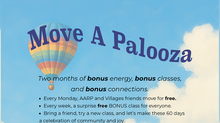Step-by-Step Senior Gait Exercises: Walk with Strength and Stability
- Maria Francis

- Apr 24, 2024
- 3 min read
Updated: May 2, 2024

Maria has created a series of videos just for you to improve your balance and mobility. These short, 5-7 minute videos improve your walking quality. Check out our new YouTube channel. Subscribe to our channel to get updates on new videos.
What is Gait? Gait is your pattern of walking. When you walk, your brain sends signals to your ankles to coordinate muscle movement. Injury or an underlying medical condition can make you feel out of balance when you walk. Working on gait can help you walk with strength and stability, improving mobility and balance for seniors. These step-by-step gait exercises help you walk with strength and stability.
What is an abnormal Gait?
An abnormal gait is a change to your walking pattern. Everyone’s natural walking style is unique. However, injuries and medical conditions can affect your walking pattern. Anything that affects your brain, spinal cord, legs, or feet can change your gait. Some common examples of an abnormal gait include:
Limping.
Dragging or shuffling your feet.
Short steps.
Difficulty supporting the weight of your body.
Trouble with coordination.
Walking with your head bent forward towards the ground.
Feeling out of balance when you walk.
If you have any of the issues above, these exercises are designed to correct your walking patterns.
In these videos:
Video # 1 – Warm Up- The warm-up is done before you start the exercise.
The purpose of the warm-up is to prepare the cardiovascular, musculoskeletal, and nervous system for the upcoming set of exercises.
ROCKING SIDE TO SIDE
Stand with feet shoulder-width apart. Gently shift your weight onto one foot, really getting the weight onto that foot. If you feel comfortable, the heel on the other foot should come slightly off the ground as you shift onto that foot. Then, shift your weight onto the other foot. Again, if you feel comfortable, the heel of the foot without the weight should come up slightly off the ground.
Video # 2 – Stepping Forward
STEP STRAIGHT AHEAD AND RETURN LEADING WITH RIGHT FOOT
Stand with feet about shoulder-width apart. Take a comfortable step straight ahead with your right foot, putting the heel down first and rolling onto the toe. Shift your weight onto the right foot, causing the left foot heel to come off the ground. Shift your weight back onto the left foot and take a step back with the right foot so that your feet are back in the starting position (your base). Repeat, taking steps with the right foot only and switching to the left foot following the video.
Video # 3 – Step Straight and Return
STEP STRAIGHT BACK AND RETURN, LEADING WITH THE RIGHT FOOT
Stand with feet about shoulder-width apart. Take a comfortable step straight
backward with your right foot, putting the toes down first and rolling onto the heel. Shift your weight onto the right foot, causing the toe of the left foot to come off the ground. Shift your weight back onto the left foot and take a step forward with the right foot so that your feet are back in the starting position (base). Keep the trunk upright. Repeat, taking steps with the right foot only and switching to the left foot following the video.
Video # 4 – Step Across Forward and Return
STEP ACROSS FORWARD, RETURN WITH RIGHT FOOT (DIAGONAL STEPPING)
Stand with feet about shoulder-width apart. With your right foot, take a comfortable step forward and across the midline so that your right foot is in front of the left. Shift your weight onto the right foot, causing the left heel to come up off the ground. Now shift your weight back onto your left foot, step back to the starting position with your right foot only, and switch to the left foot following the video.
Fall Prevention for Older Adults age 65+. Senior Exercise and Balance are critical for healthy aging.












































Comments